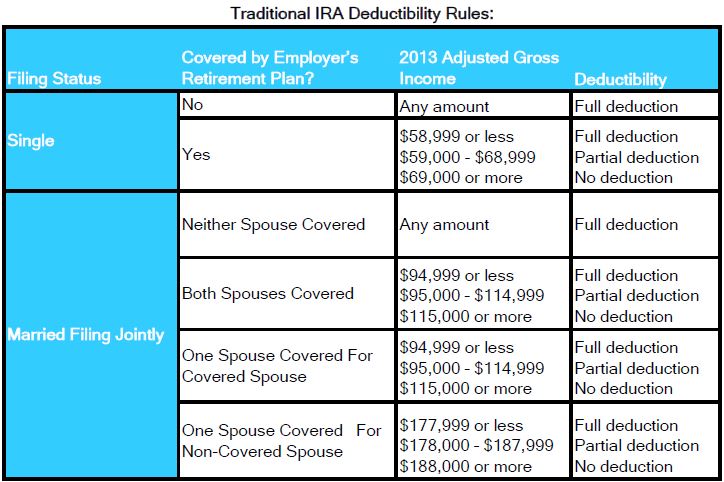- June 10, 2013
- Mike Minter

Few would question the merits of using a Traditional IRA as a vehicle for tax-deferred retirement savings. They are very easy to establish, and the investment options are vast. As long as you are under the age of 70 ½ and have taxable earned income, pretty much anyone can contribute to a Traditional IRA.
For 2013, the maximum you can contribute to a Traditional IRA is the smaller of:
• $5,500 ($6,500 if you’re 50 or older)
• Your taxable earned income for the year
I’d say that’s fairly straightforward. What isn’t so clear, however, is whether or not your IRA contribution is actually deductible for that tax year.
The deductibility of your Traditional IRA contribution in any particular year depends entirely upon whether or not you, or your spouse, are participating in a company retirement plan. And if the answer to this question is yes, there is an added layer of complexity determined by your level of income and filing status.
I’ve included a chart that displays the deductibility rules based on filing status, employer retirement plan coverage, and income.

Obviously if you (or your spouse) are not covered by an employer’s retirement plan then you will get the full deduction. It’s when you are covered that things get a little tricky.
Getting immediate tax relief via a deduction is certainly not the only reason to contribute to your IRA. All earnings inside your Traditional IRA will grow tax-deferred, and this will give your IRA money a significant advantage over your taxable investments over the long-term.
–Mike Minter



